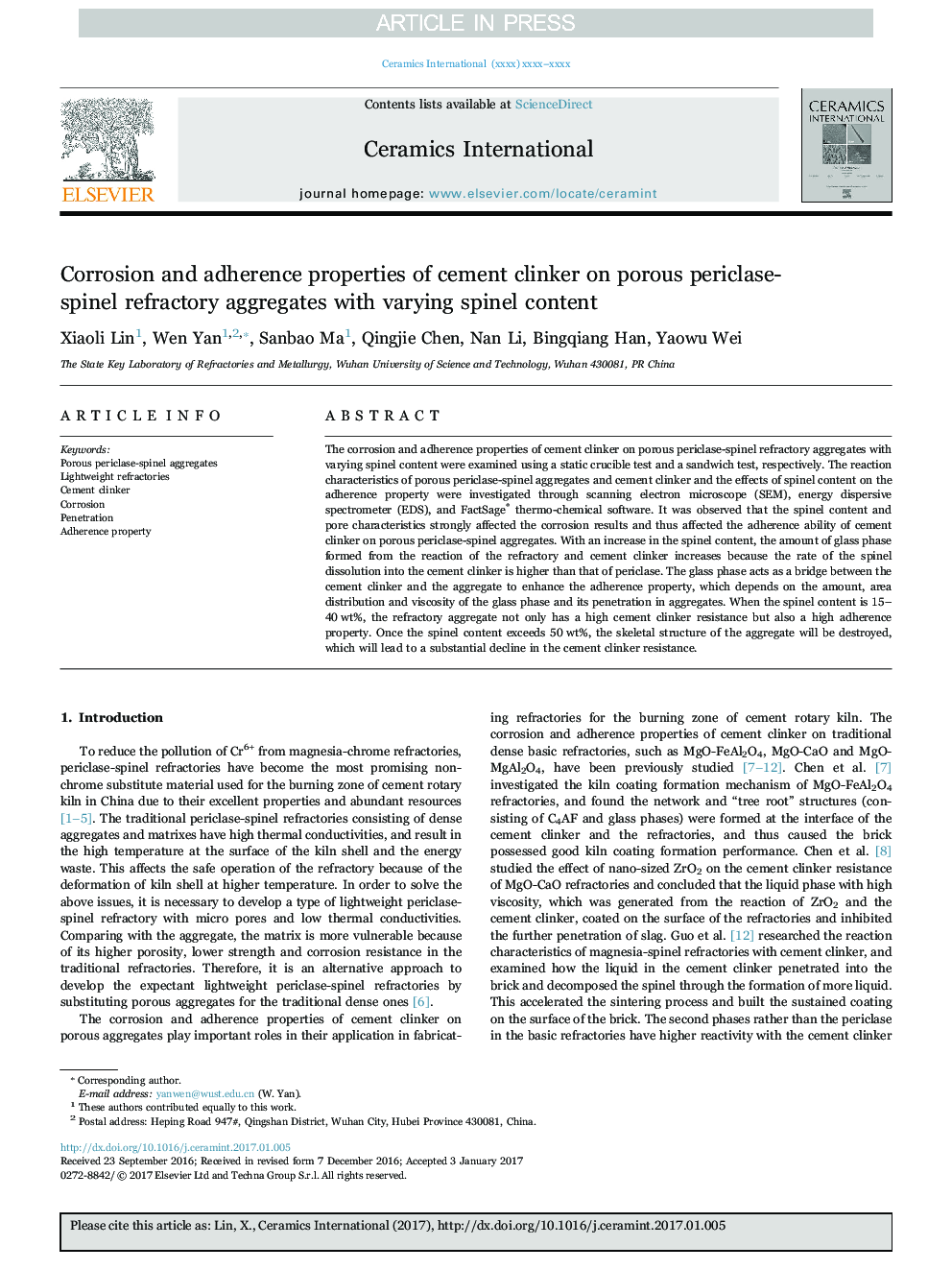| Article ID | Journal | Published Year | Pages | File Type |
|---|---|---|---|---|
| 5438630 | Ceramics International | 2017 | 8 Pages |
Abstract
The corrosion and adherence properties of cement clinker on porous periclase-spinel refractory aggregates with varying spinel content were examined using a static crucible test and a sandwich test, respectively. The reaction characteristics of porous periclase-spinel aggregates and cement clinker and the effects of spinel content on the adherence property were investigated through scanning electron microscope (SEM), energy dispersive spectrometer (EDS), and FactSage® thermo-chemical software. It was observed that the spinel content and pore characteristics strongly affected the corrosion results and thus affected the adherence ability of cement clinker on porous periclase-spinel aggregates. With an increase in the spinel content, the amount of glass phase formed from the reaction of the refractory and cement clinker increases because the rate of the spinel dissolution into the cement clinker is higher than that of periclase. The glass phase acts as a bridge between the cement clinker and the aggregate to enhance the adherence property, which depends on the amount, area distribution and viscosity of the glass phase and its penetration in aggregates. When the spinel content is 15-40Â wt%, the refractory aggregate not only has a high cement clinker resistance but also a high adherence property. Once the spinel content exceeds 50Â wt%, the skeletal structure of the aggregate will be destroyed, which will lead to a substantial decline in the cement clinker resistance.
Keywords
Related Topics
Physical Sciences and Engineering
Materials Science
Ceramics and Composites
Authors
Xiaoli Lin, Wen Yan, Sanbao Ma, Qingjie Chen, Nan Li, Bingqiang Han, Yaowu Wei,
